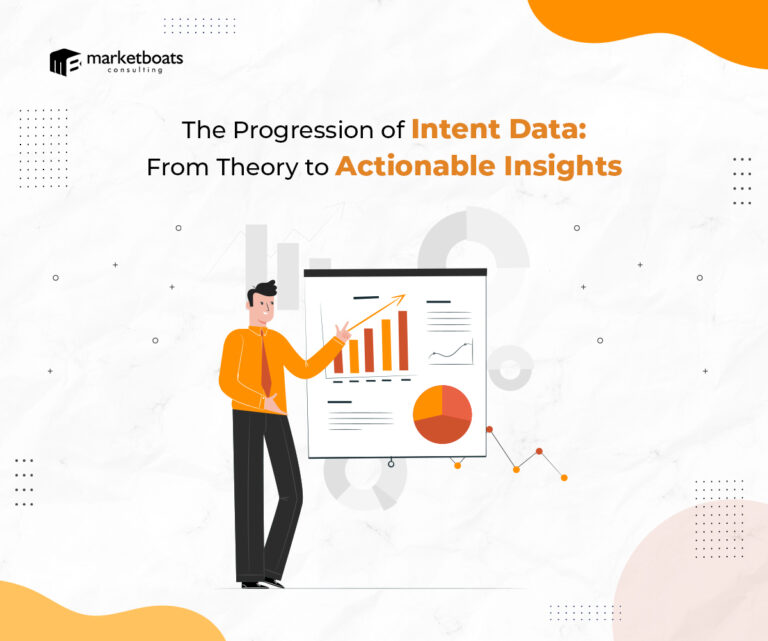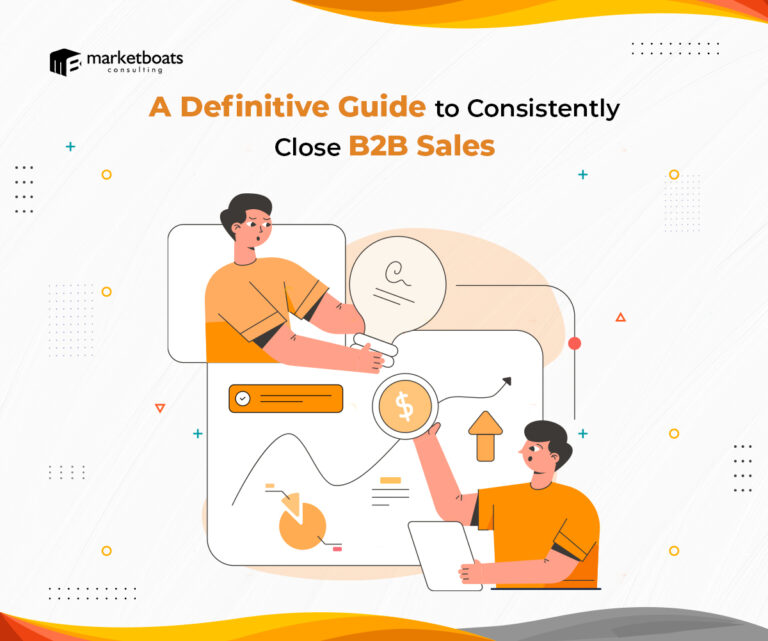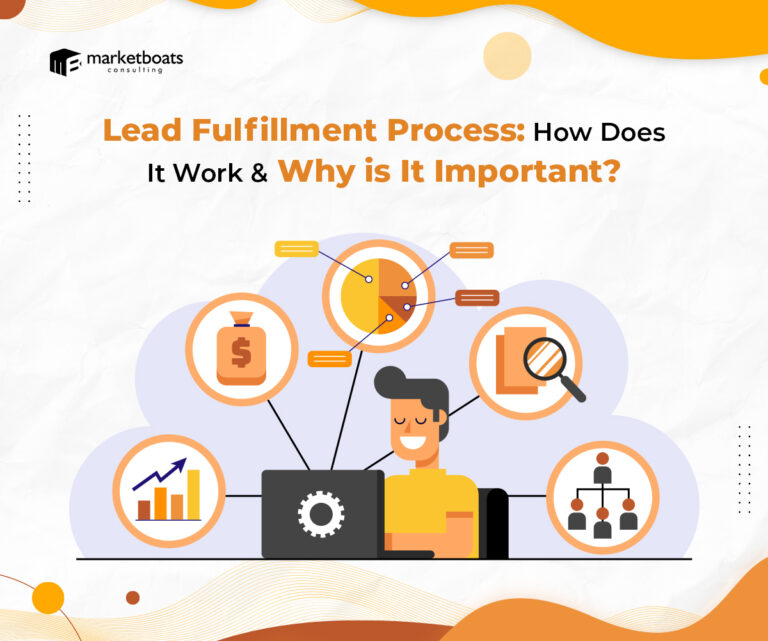Innovative marketing efforts have played an imperative role in catalyzing company growth, aiming toward maximum customer satisfaction and enhanced revenue generation. Over the years, marketing teams have developed structured marketing models to leverage actionable insights into valuable outcomes. One such impactful approach, winning the marketing strata, is ABM.
ABM, or Account-based marketing, is a highly personalized marketing strategy that targets high-revenue, long-term clients rather than traditional cold pitching methods. The typical ROI for account-based marketing efforts is much higher than the returns from other marketing approaches.
Businesses that implemented account-based marketing strategies and followed them ritualistically reported a ‘208% uplift in revenue’ from their marketing efforts. However, to ensure you reach your target goals, you must learn how to measure account-based marketing.
Tracking ABM key performance indicators (KPIs) or ABM Metrics is one way to easily measure your marketing success rate!
Let’s discover the ABM benchmark metrics you should be tracking to measure the success of your efforts and boost your business.
Deciphering ABM Metrics to Track Campaign Success
- Increased engagement with marketing qualified accounts (MQA)
One of the most basic functions of ABM is weeding out unqualified or low-value accounts from your target consumer database. It scrutinizes and selects marketing-qualified accounts with high value and potential to drive up your revenue.
Set the correct standards through research and filter out the right accounts in the identification stage to ensure you put your money into the right people.
- Prospect engagement metrics
The more time a prospect spends engaging with your brand, the more likely they will become loyal consumers of your product or service.
You can measure the engagement cultivated through account-based marketing strategies by monitoring quantitative parameters like email clickthroughs or website traffic driven by personalized advertisements, post shares, tags on comments, and qualitative parameters like time spent on your website or actions completed by the prospective clients.
Prospect engagement for ABM comprises three key metrics:
- Email metrics: This involves the engagement received through email content. How many open your emails and read through them, how high or low are the clickthrough rates, and how the account responds to your emails or newsletters are the questions you should address here.
- Social metrics: Track if your targeted accounts engage with your social media posts. How likely are they to comment, share or react to your post? If you are adding links to your posts, are they clicking on them to come to your desired page?
- Offline engagement metrics: This involves your prospects’ engagement in offline events. If you organize any event, are they accepting and attending your invites? This also includes if they are directly reaching out to you through calls, emails, or social media direct messages.
- Lead to consumer conversion ratio metrics
After reaching out to targeted profiles, how many are returning as paying customers? The leads you reach out to through ABM are already filtered and targeted for your product or service sales. Therefore, this ratio should not have a high point of difference. The smaller the difference, the better your ABM strategy proves to be.
This is a direct way to measure how much your efforts are working to fish in your prospective clients. Quality merges with quantity through this parameter.
- Conversion rate metrics
Before going into this, it is important to mention and clarify that conversion rate and lead-to-consumer ratio are different. The lead-to-consumer ratio is the number of leads that turn into your customers, while the conversion rate is the number of website-visiting accounts who make a purchase or take the action you want them to.
In ABM, monitoring conversion rate is very important because the focus is not on just increasing website traffic but increasing revenue. The conversion rate measures your strategy’s success in turning your website visitors into paying customers.
- Sales cycle metrics
Since the money you spend on ABM is to pick out high-value accounts more likely to make a purchase, the sales cycle length is bound to be shorter.
To determine your average sales cycle length, divide the duration of each of your sales from the beginning to the closing of the transaction by the number of deals made.
If you find the sales cycle length has not improved since the implementation of your ABM strategy, you need to understand that something went wrong while filtering out your target profiles.
- Pipeline velocity
An extension of the Sales Cycle ABM metric, pipeline velocity indicates the time to close each deal singularly. Again, since ABM singles out high-value accounts, each deal should ideally be closed smoothly and efficiently in a short amount of time.
A better pipeline velocity results in a shorter sales cycle. If you are not getting the desired results through ABM, you must reconsider the standards for filtering out your target accounts.
- Average selling price increase
Getting deals with high-value accounts translates to having the opportunity to increase your brand’s monetary value. ABM-filtered accounts should give you the space to increase your average selling price.
If you cannot increase your selling price even after implementing ABM strategies, it indicates that your spending on ABM is not worth it. Since abundant research-based strategy and effort are employed on generating high-value accounts, it is excepted to reap valuable outcomes. By measuring an increase in your average selling price, marketers can comprehend value fluctuations through implemented ABM strategies, reflecting positive or negative outcomes of the same.
- Return on investment (ROI) metrics
Is your marketing spend on ABM implementation larger than its return? ROI, or Return on Investment, is an exceptional metric that marketers can evaluate to track investment trends.
Since your returns should be considerably higher than the cost incurred through your entire project, a minute fluctuation in ROI metrics will reflect a demand for change in ABM marketing approaches.
Summing Up
ABM has been the crown jewel of marketing models. Practical, well-planned ABM strategy measures churn out the highest ROIs, especially in B2B models. While this can potentially change the face of your business profits, you must ensure that you are following the correct standards and measuring the key ABM metrics.
Tracking your ABM metrics not only helps you understand the success rate of your campaigns but also highlights any shortcomings so that you may rectify them and fill in the gaps appropriately. Combining all the data provided by tracking these metrics, you can perfect your account-based marketing strategies and boost your ROI, which is the ultimate goal of any business organization.
Understanding the technicalities of marketing strategies and ritualistically following up with the latest trends, tracking the right metrics cannot be everyone’s cup of tea. To get the best results, you need an expert like Marketboats Consulting for marketing solutions that are designed to drive higher revenue.





